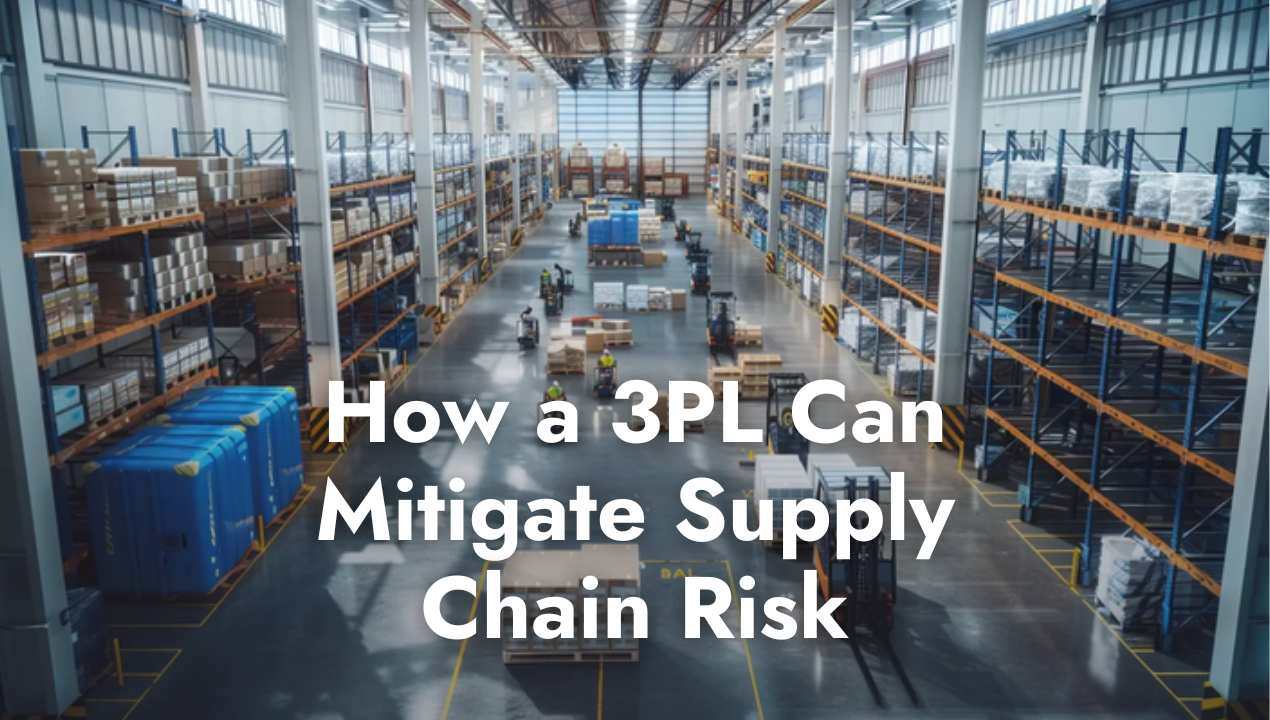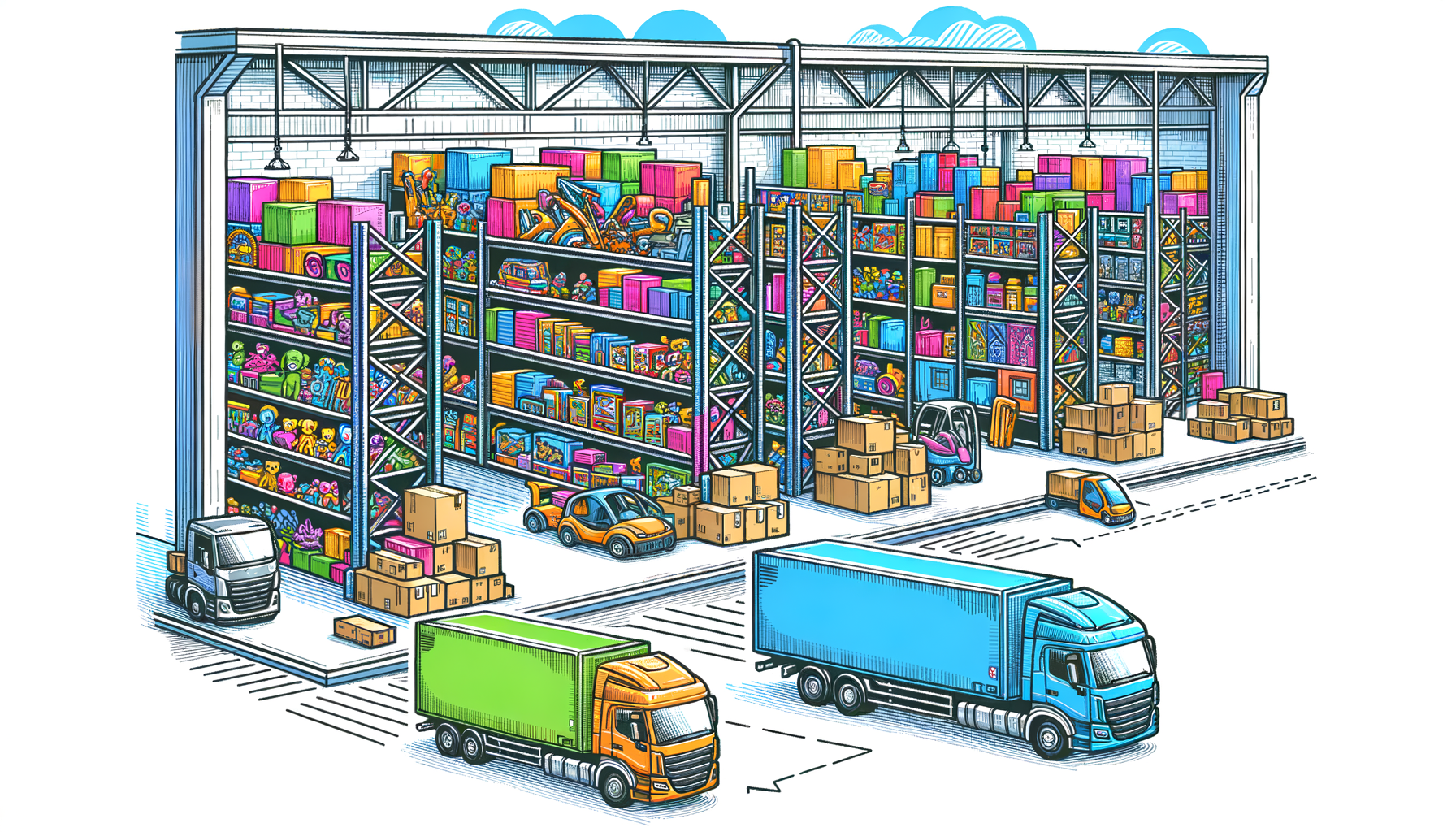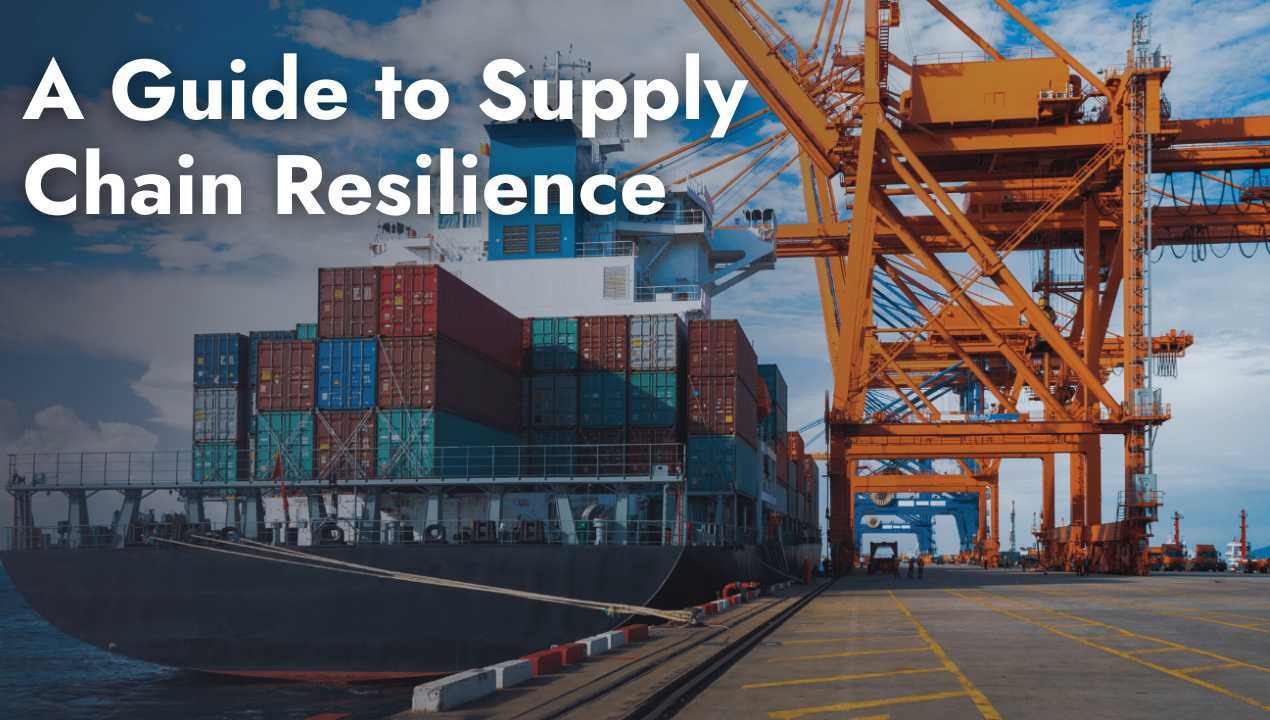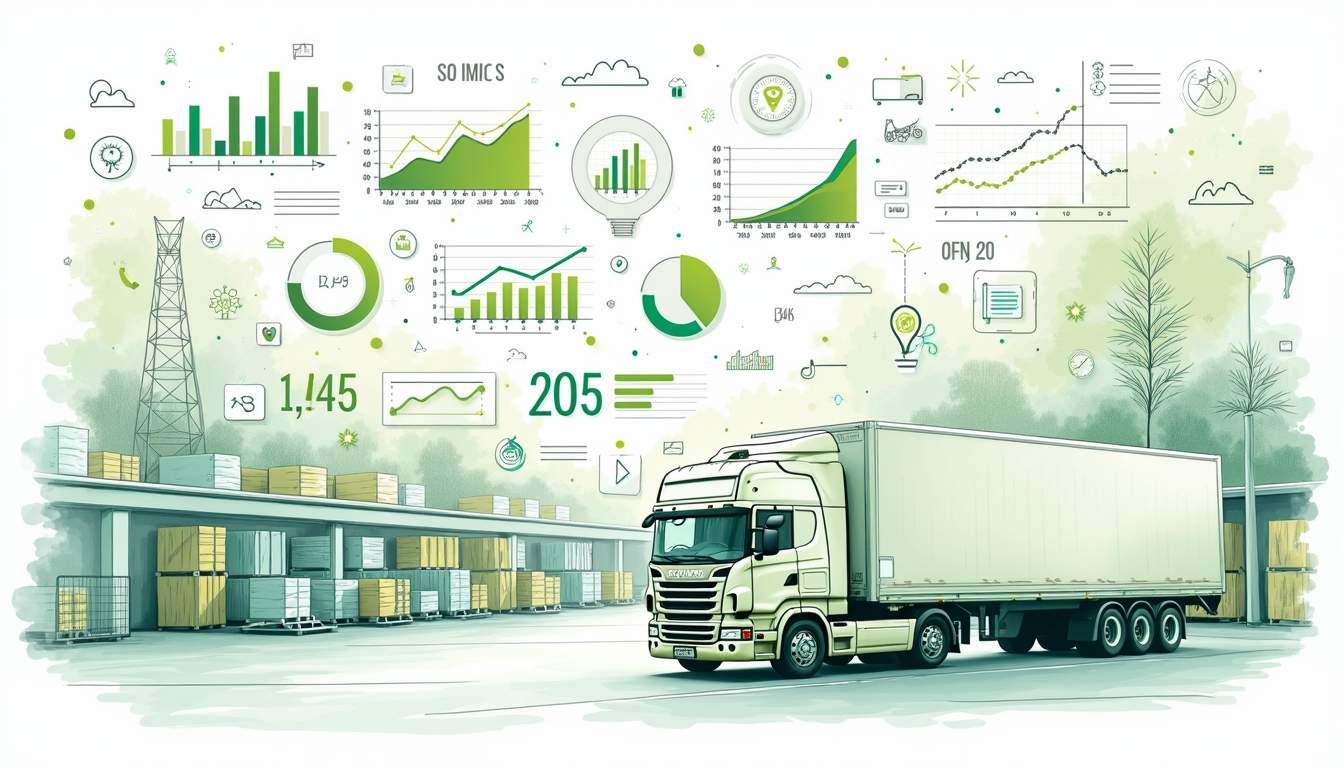Share this
How a 3PL Can Mitigate Supply Chain Risk
by Rin Mosher on Oct. 7, 2024

For fast-growing ecommerce businesses, managing supply chain disruptions can feel like navigating a minefield. From global crises to unexpected supplier shutdowns, these challenges can hit both profitability and operational efficiency. The key to staying ahead? Proactive planning and the right partnerships.
A trusted 3PL can help mitigate supply chain risk by offering the expertise, resources, and flexibility needed to navigate these disruptions. In this article, we’ll explore how outsourcing logistics can reduce your supply chain risks so you can focus on growing your business with confidence.
Supply Chain Resilience Explained
Supply chain resilience is what keeps businesses running smoothly during times of uncertainty. It's a practical and essential asset, defined by a company’s ability to plan for, respond to, and recover from potential risks. Resilient supply chains are ones that can quickly adapt to disruptions, whether in the form of natural disasters, political unrest, or shifts in consumer demand.
Such adaptability has become an asset for businesses across a range of industries. No one operates in a vacuum, and companies that invest in proactive planning are often better equipped to weather crises and emerge stronger. In this way, supply chain resilience isn’t just about survival – it’s a key factor in gaining an edge over the competition.
What Does Supply Chain Resilience Look Like?
Supply chain resilience is about building a system that can adapt, recover, and continue operating despite disruptions. There’s no single formula, as resilience depends on a business’s specific needs and challenges. However, resilient supply chains share certain key characteristics – they’re agile, have strong visibility into operations, and are flexible enough to adjust to changing conditions.
A resilient supply chain can absorb shocks, maintain service levels, and quickly bounce back from disruptions, ensuring the business keeps delivering value to customers regardless of the challenges it faces. Creating this resilience often requires strategic investments in technology, diverse sourcing, and scalable operations, which often means having a dedicated team focused on managing these complexities.
How a 3PL Can Protect You From Supply Chain Risks
Not every ecommerce business has the resources or desire to build an in-house team to manage supply chain risks. Even for those that do, keeping up with the fast pace and unpredictability of supply chain disruptions can be overwhelming. That’s where a third-party logistics (3PL) provider can offer real value. A 3PL brings specialized expertise, advanced infrastructure, and scalable solutions to reduce supply chain risks, helping you maintain efficiency and support long-term growth.
Below, we explore how partnering with the right 3PL can give your business the flexibility and protection it needs to stay ahead.
Lot Tracking for Quality Control
Quality control is the backbone of customer trust. But even the most thorough checks can miss a defect now and then, leading to returns, refunds, and a hit to your brand's reputation. Spotting and resolving these issues quickly is essential to minimizing risks and keeping operations running smoothly.
That’s where a 3PL’s lot tracking capabilities really shine. With unique identifiers assigned to product batches, lot tracking systems can trace each item through every step of the supply chain. Paired with inventory management methods like FIFO and LIFO, which ensure products are rotated correctly, lot tracking allows you to pinpoint issues, isolate affected batches, and take immediate corrective action.
3PLs bring advanced tools and expertise to the table, making lot tracking not just possible but efficient and scalable. Keeping tabs on thousands of products is no small feat, especially when quality issues arise. With a 3PL’s support, you gain the visibility needed to enhance traceability and accountability across your entire supply chain.
In a resilient supply chain, the ability to swiftly pinpoint and address quality issues is invaluable. A 3PL’s lot tracking system, combined with effective inventory management practices, empowers your business to contain potential risks and maintain the high standards your customers expect, even when challenges arise.
Regulatory Compliance Expertise
When it comes to compliance, not all products are created equal. Cosmetics, health supplements, and medical equipment each come with their own set of stringent requirements – think SQF certifications for food safety, FDA standards for pharmaceuticals, or Health Canada regulations for medical devices. Failing to meet these critical safeguards can lead to fines, recalls, or even a complete halt in operations.
The thing is, virtually no company actively tries to break industry code. Violations typically occur due to oversights in understanding complex regulations or lapses in internal enforcement measures. This is especially true for businesses expanding into new markets or launching new product lines.
A knowledgeable 3PL doesn’t just understand the regulations – they’re built to meet them. From temperature-controlled facilities for pharmaceuticals to pest-controlled storage for consumables, their warehouses are designed to comply with regulatory standards right from the start. And with certifications and experience to back it up, a 3PL can proactively mitigate supply chain risks, protecting your business from penalties and ensuring smooth, uninterrupted operations.
Scalability During Demand Spikes
Spikes in demand are good – if a business is equipped to keep up. But without the right infrastructure, these surges can strain staff, space, and systems, slowing down operations and putting customer satisfaction at risk. The inability to scale effectively during peak times isn’t just an operational hiccup; it’s a supply chain risk that can lead to lost sales, damaged customer relationships, and long-term revenue loss.
This is where a 3PL adds a layer of supply chain resilience. By leveraging a 3PL’s large-scale network of resources and advanced warehouse management systems (WMS), businesses can scale seamlessly, even under pressure. A 3PL’s facilities are designed to accommodate sudden increases in volume, ensuring that inventory is carefully tracked and orders are fulfilled accurately, no matter the demand.
Having a scalable infrastructure in place mitigates the risk of capacity overload and protects your supply chain from disruptions during busy seasons. With a runway already in place, growing ecommerce businesses can focus on the profit brought by unexpected surges in sales rather than the risk of capacity overload.
Distributed Warehousing to Minimize Disruptions
Severe weather conditions such as hurricanes, snowstorms, or floods often disrupt supply chains by affecting transportation routes and damaging infrastructure. If all of a business’ fulfillment centers are located in the same area or has its inventory stored at only one location, that could mean having to completely shutter operations. The resulting impact on order turnaround time and missed sales is a competitive disadvantage when other businesses have resources elsewhere.
Ecommerce fulfillment systems dispersed across wide geographical areas mitigate supply chain risks and ensure continuity in the face of localized disruptions. Smart 3PLs purposely choose warehouse locations in diverse regions to balance proximity to major markets and resilience against regional disruptions.
Strategic placement allows for rerouting orders through unaffected centers, ensuring that customers receive their products without delay. Having warehouses in multiple regions also helps optimize overall delivery times and reduce shipping costs, enhancing overall customer satisfaction.
Contingency Planning for Service Disruptions
Service slowdowns, suspensions, and shutdowns are realities that can affect any business, whether due to carrier delays, labor strikes, or even natural disasters. For ecommerce companies, disruptions with carriers – like delays in dispatching networks or logistical bottlenecks – can have a ripple effect on the entire operation. Relying on a single provider leaves businesses vulnerable to these disruptions, potentially halting deliveries and impacting customer satisfaction.
Consider a scenario where a shipping carrier's fleet dispatching network goes down. The organization-wide crisis would halt operations, leaving customers with no choice but to wait until the issue is resolved. In ecommerce, that might mean having to pause incoming orders or extend delivery timelines – two ripple effects with the potential to harm sales and the customer experience.
Having dealt with unforeseen circumstances before, experienced 3PLs are well-positioned to help businesses adapt in the face of uncertainty. They’ll already have contingency plans in place for sudden but ultimately inevitable events like storms and service disruptions. It’s then simply a matter of choosing the right pre-arranged alternative.
Data-Driven Decision-Making for Risk Management
In ecommerce, every decision – from setting reorder points to managing returns – can have a significant impact on your supply chain’s resilience. Without accurate data, these decisions become guesswork, increasing the risk of stockouts, excess inventory, and missed opportunities. A 3PL provides the data insights you need to make informed choices and keep operations running smoothly.
With detailed analytics and real-time reporting tools, 3PLs equip businesses to forecast demand accurately, adjust inventory levels proactively, and streamline reverse logistics. For example, real-time demand forecasting helps you place orders just in time to avoid stockouts or overstocking, while data on returns highlights which products may pose quality issues or lead to customer dissatisfaction.
Access to comprehensive data doesn’t just improve decision-making; it cultivates agility. When you can catch trends early and respond quickly, you’re better positioned to navigate market fluctuations and avoid costly disruptions. In this way, the data and insights provided by a 3PL play a crucial role in mitigating supply chain risks and building a resilient operation that can adapt to change.
Mitigate Supply Chain Risk While Growing with Shipfusion
Growth doesn’t happen by chance; it’s built on a foundation of smart planning and reliable partnerships. Shipfusion equips fast-growing ecommerce brands with the tools they need to tackle supply chain risks head-on. With our strategically located warehouses, dedicated Account Managers, and real-time reporting, you’re never left guessing – only growing.
Let Shipfusion be your partner in resilience. We’re purpose-built for ecommerce businesses like yours, ready to provide the infrastructure and expertise you need to thrive, no matter what tomorrow brings. Request your custom quote today and discover how we can help you scale with confidence.
Share this
You May Also Like
These Related Articles

Benefits of Using a 3PL for Toys

A Guide to Supply Chain Resilience In Ecommerce

9 Logistics Performance Metrics Your 3PL Should Be Tracking
- April 2025 (9)
- March 2025 (26)
- February 2025 (26)
- January 2025 (37)
- December 2024 (16)
- November 2024 (23)
- October 2024 (22)
- September 2024 (27)
- August 2024 (9)
- July 2024 (8)
- June 2024 (5)
- May 2024 (8)
- April 2024 (8)
- March 2024 (6)
- February 2024 (6)
- January 2024 (5)
- December 2023 (3)
- November 2023 (3)
- October 2023 (5)
- September 2023 (4)
- August 2023 (2)
- July 2023 (1)
- June 2023 (4)
- March 2023 (2)
- October 2022 (1)
- September 2022 (5)
- August 2022 (4)
- July 2022 (7)
- June 2022 (4)
- May 2022 (4)
- April 2022 (6)
- March 2022 (2)
- February 2022 (1)
- January 2022 (3)
- December 2021 (2)
- November 2021 (4)
- October 2021 (2)
- September 2021 (5)
- August 2021 (4)
- July 2021 (4)
- June 2021 (3)
- May 2021 (2)
- April 2021 (3)
- March 2021 (3)
- February 2021 (3)
- January 2021 (2)
- December 2020 (4)
- November 2020 (2)
- October 2020 (4)
- September 2020 (2)
- July 2020 (5)
- June 2020 (4)
- May 2020 (2)
- April 2020 (2)
- March 2020 (4)
- February 2020 (1)
- December 2019 (1)
- May 2018 (1)
- March 2018 (2)
- February 2018 (3)
- January 2018 (3)
- November 2017 (3)
- July 2017 (4)
- March 2017 (3)
- February 2017 (5)
- January 2017 (3)
- December 2016 (4)
- November 2016 (6)
- October 2016 (6)
- October 2015 (1)
- September 2015 (1)
- June 2015 (3)
- May 2015 (3)
- August 2014 (1)
- July 2014 (1)
- March 2014 (1)
- February 2014 (1)